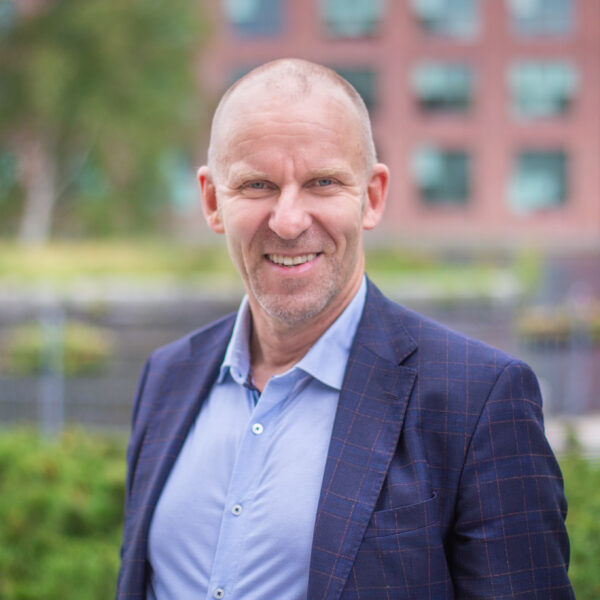An enthusiastic drive accelerated swift cooperation in Finland – Recruitment for the Chips Competence Centre begins
6.9.2024
Finland has taken significant steps forward in the development of chip technology and expertise. The goal is in establishing a strong position in the European microchip future. Experts in the field from Tampere, Espoo, Oulu, and Joensuu have uniquely connected with each other, and as a result of this collaboration, a Chips Competence Centre (FiCCC) is emerging in Finland.
A key role in coordinating the rapid development has been played by Petri Räsänen, who started as the director of Business Tampere's chip program in August 2023. He has been instrumental in the creation of the centre formed by four entities, with its tasks based on the recent European Chip Act by EU.
"A year ago, I started at Business Tampere, and from a foggy outlook, a clear vision has taken shape of what we want to achieve in Finland. We are focusing on advanced next-generation system-on-chips and specialized manufacturing processes. Finland is already among the best in Europe in these areas", says Chips from Tampere Program Director Petri Räsänen, clearly relieved by the progress.
A shared sense of purpose has given rise to a nationally unique project, aimed at elevating Finland to the forefront of chip expertise in Europe.
The Chips Competence Centre supports commercial actors
Hankkeen taustalla ovat innovaatioiden ja teknologian kehittämisestä vastaavat organisaatiot, huipputeknologian innovaatiotyöhön keskittyvä Uusi Tehdas (New Factory), focused on high-tech innovation work, Kvanttinova from City of Espoo, Business Oulu, and Photonics Finland ry from City of Joensuu.
"From a Tampere-dweller's perspective, the new Chips Competence Centre showcases the impressive utilization of technology originating from Hervanta – and on a completely new level. At the same time, Uusi Tehdas, which has previously been highly successful in innovation and development, is also embarking on new paths", says Jari Erkkilä, CEO of Uusi Tehdas, the coordinating body of FiCCC.
The emerging centre ensures that Finland is prepared to meet the challenges of chip development and manufacturing. The Chips Competence Centre will activate the industry and companies in the field to utilize the EU's design platform and pilot manufacturing environments. One of these is a chip pilot line to be located in Tampere.
In the Tampere SiPFAB (System in a Package) pilot environment, third-generation energy-efficient semiconductors and chip systems based on them will be developed and tested. The construction of the pilot line runs parallel to the project, for which Tampere University has received €40 million in EU funding.
In Otaniemi, Espoo, a pilot line will be built alongside the Micronova infrastructure, supporting chip development for both 200mm and 300mm silicon wafers. Previously, 150mm silicon wafers were used in chip manufacturing. The purpose of the new line is to provide semiconductor industry players with research and development opportunities in Finland.
Based on Finnish top expertise
In Tampere, the foundation of chip skill-set is based on a tradition of designing large and complex system-on-chips and optoelectronics. In Espoo, Kvanttinova leverages research expertise from VTT and Aalto University, particularly in material science and silicon wafer processing. Oulu is known for its strong history in radio technology, tracing back to Nokia's peak years. Business Oulu and the University of Oulu are committed to developing the region's radio technology chip expertise to meet future challenges. In Joensuu, Photonics Finland focuses on specialized knowledge in optics and photonics, which complements chip technology development.
Combining regional knowledge allows Finland to play a strong role in implementing Europe's chip strategy and provides companies and industry players with the opportunity to benefit from the unique strengths of each region.
Future Prospects
The Finnish Chips Competence Centre is still in the preparation phase, but its operations are expected to begin in early 2025. The centre aims to recruit the best experts in the field and will provide an excellent support structure for the entire industry in Finland. An application for funding from the European Union is being finalized and will be submitted in early October 2024. The smooth startup of the Chips Competence Centre will be ensured by its 4-year funding. National funding will be provided through Business Finland.
"The collaborative model in Tampere has been a key resource as we have built cooperation between different regions. In addition to finding common denominators, we have also identified the unique profiles of each region and sought to integrate them according to the needs of businesses", says Räsänen.
Collaboration enables a new era
The establishment of the Chips Competence Centre is a testament to how a strong sense of purpose leads to smooth collaboration in line with Finland's national strategy. The future in the field looks bright as Finland joins forces with other European countries to ensure the development and manufacturing of chips for the next generation.
"We are at a fantastic stage where we are already starting to recruit the first experts for the centre. It will offer jobs at the cutting edge of the world’s hottest industry", Räsänen reflects.
European chip expertise has strong support from the European Union. Europe woke up a few years ago to the unsustainable reality where global chip expertise was overly concentrated in the USA, China, and Taiwan. The EU's chip regulation aims to double Europe's market share in microelectronics to 20 percent by 2030.
